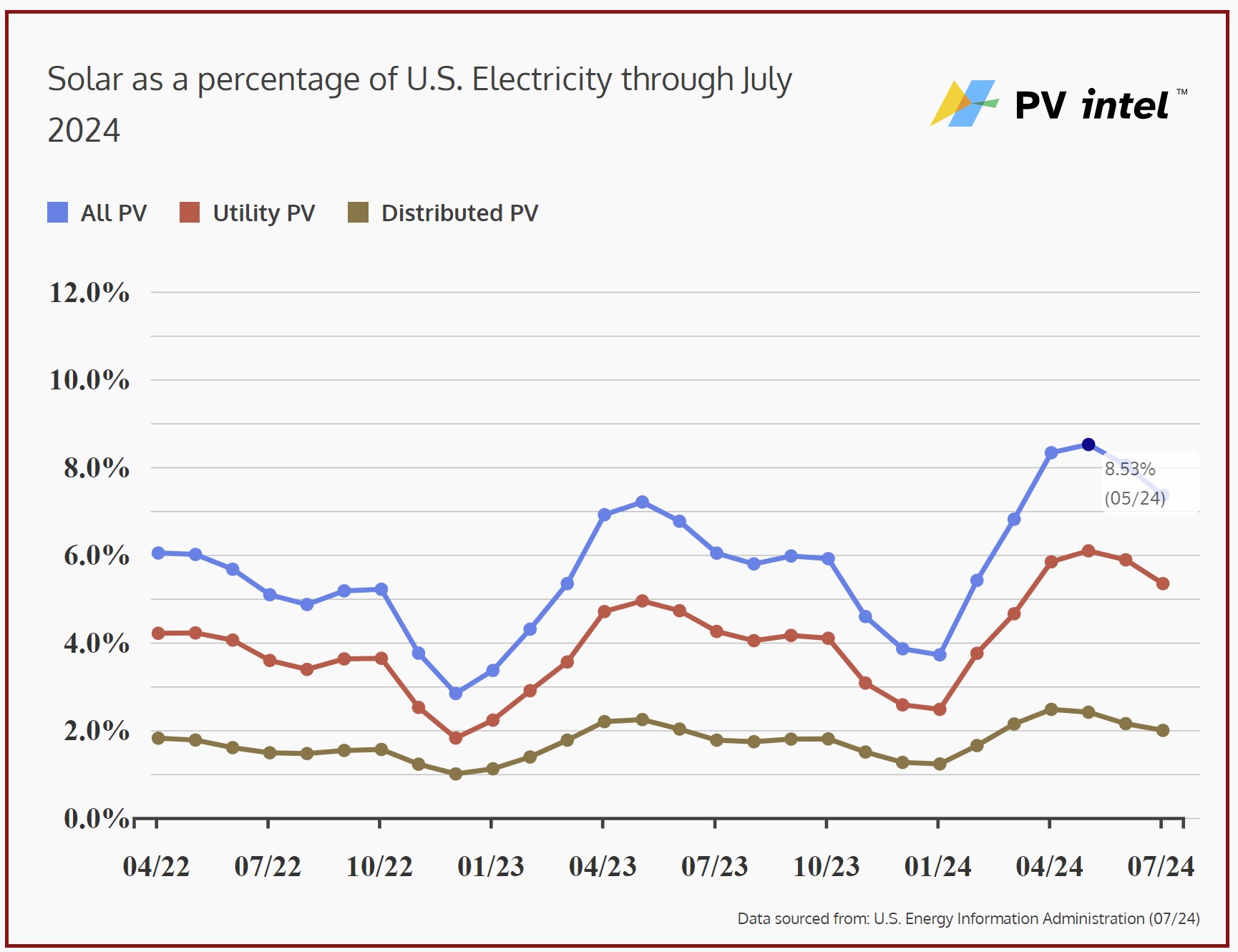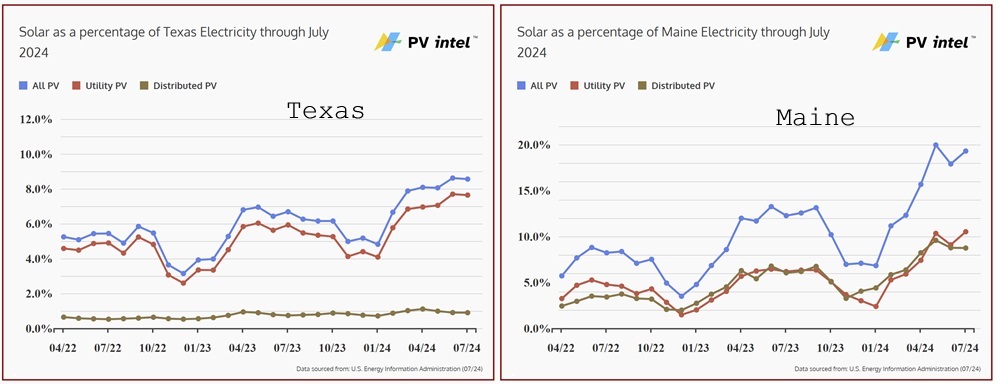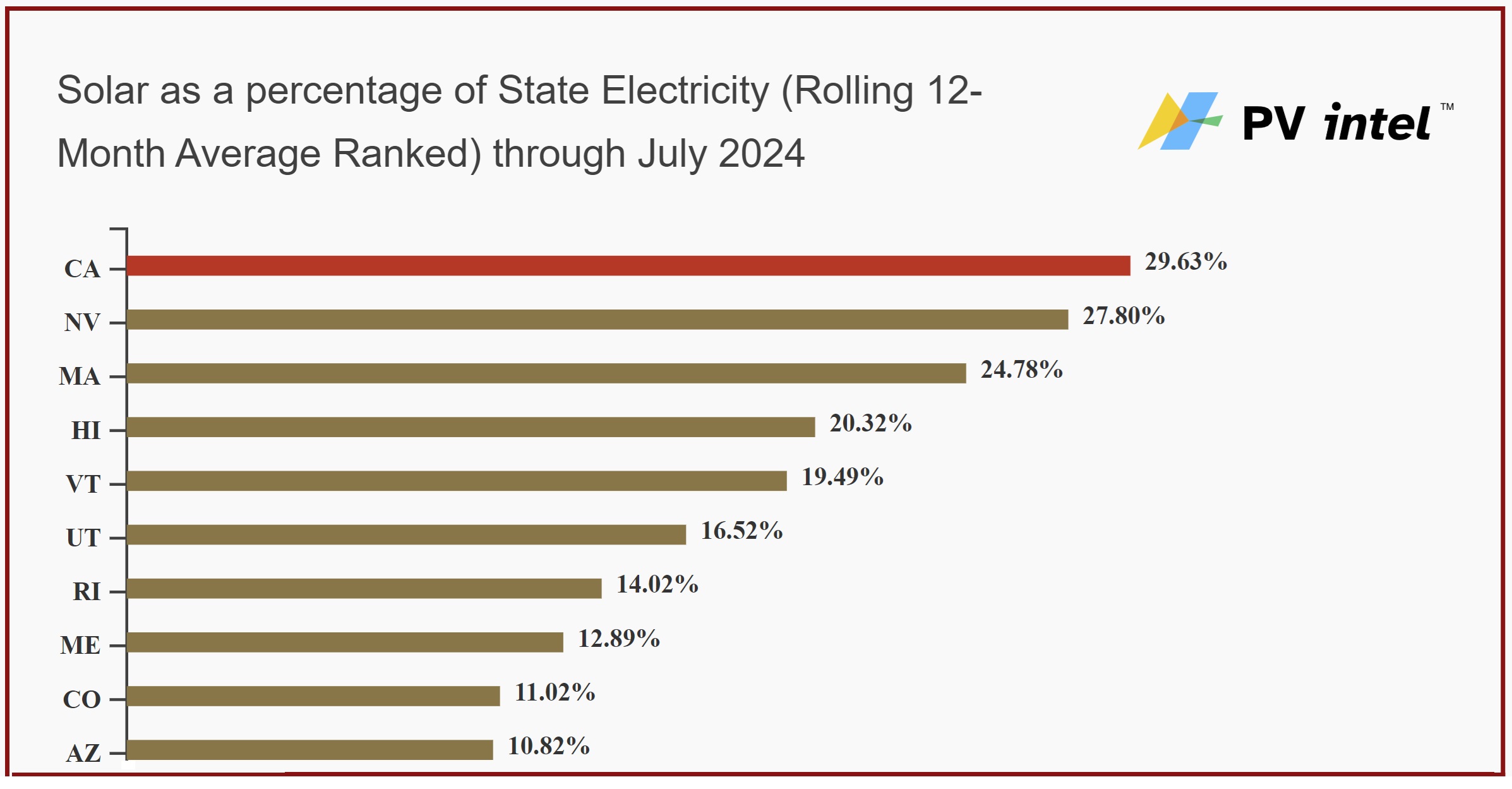In 2024, the U.S. power grid’s electricity generation increased by over 109 TWh through the end of July, marking a 4.5% growth. This surge was led by a 52 TWh increase in methane generation, while solar power contributed an additional 36 TWh.
The U.S. Department of Energy’s Energy Information Administration (EIA) released its September Electric Power Monthly, which includes data through July 2024.
Key highlights include solar generation increasing by nearly 26% year-over-year; a 1% increase in electricity consumption in July 2024 over July 2023; and a 4.5% rise in electricity generation from January to July 2024 compared to the same period in 2023. Additionally, residential electricity prices have risen by 4.6% since last year.
Nationally, solar photovoltaics have seen a steady increase, now accounting for 6.22% of all electricity generated over the past 12 months, as shown in PV Intel’s national solar data summary. This represents a 20% increase from the previous year when solar constituted 5.16% of all electricity.
In absolute terms, the EIA reports that small-scale solar generation grew from 7.7 TWh in July of the previous year to 8.8 TWh, a 13.9% increase. Utility-scale solar also saw significant growth in July 2024, increasing from 26.2 TWh in July 2023 to 32.3 TWh, marking a 23.3% rise. While these figures demonstrate robust growth, they are slightly lower than the year-to-date increases, which are 16.8% for small-scale solar and 29.7% for utility-scale solar. Together, these contribute to an overall annual increase in solar output of approximately 25.8%.
For July, electricity generation rose 1% versus last year, but from January through July – it has risen 4.5%, totaling an additional 109 TWh. This was a significant rise over previous years growth, and nearly triple the total increase from solar, which expanded by 36 TWh.
Typically, June and July are the peak months for solar electricity in absolute terms. However, as a percentage, solar generation peaked in May 2024 at 8.53% of total generation. The same month also saw the highest percentage of emission-free electricity generation for the year at 47.94%.

Several states are demonstrating growth rates so substantial that they are significantly contributing to the national increase. For example, in Texas and Maine, the influx of new solar installations is so robust that the typical autumn decline in solar generation appears more like the onset of spring, as noted in the below images. According to the Solar Energy Industries Association (SEIA), Maine is poised to expand its total solar capacity by nearly 80% by combining the growth from 2023 and 2024, and Texas by 85%.
Most of this growth stems from capacities installed in late 2023, coupled with new installations in 2024’s record-setting capacity deployment.

PV Intel also reported substantial growth in South Dakota, which increased its solar generation from virtually zero in July 2023 to 3.44% this year, following the installation of two solar plants exceeding 100 MW each. Although not as dramatic, Montana’s solar generation grew from about 0.48% to over 3% this past month compared to July in 2022, representing a nearly 600% increase over two years.
Washington state is noteworthy for producing extremely low-emission electricity, a significant boon for the solar industry as REC Silicon prepares to open its polysilicon facility there.

Over the past year, the top 10 states in solar power generation each produced more than 10% of their electricity from solar sources. California, home to the world’s largest sub-national economy, a ranking that would place it fourth or fifth globally if it were a nation, generated nearly 30% of its electricity from solar. In May, California’s solar contribution peaked at just over 41%, while Nevada reached 40.5% and Massachusetts nearly 40%.
These figures contrast sharply with those of the bottom 10 solar electricity-producing states, where solar accounts for less than 1% of electricity generation. However, many of these “solar laggards” still benefit from significant amounts of clean energy from other sources such as wind, hydro, and nuclear.
Popular content




